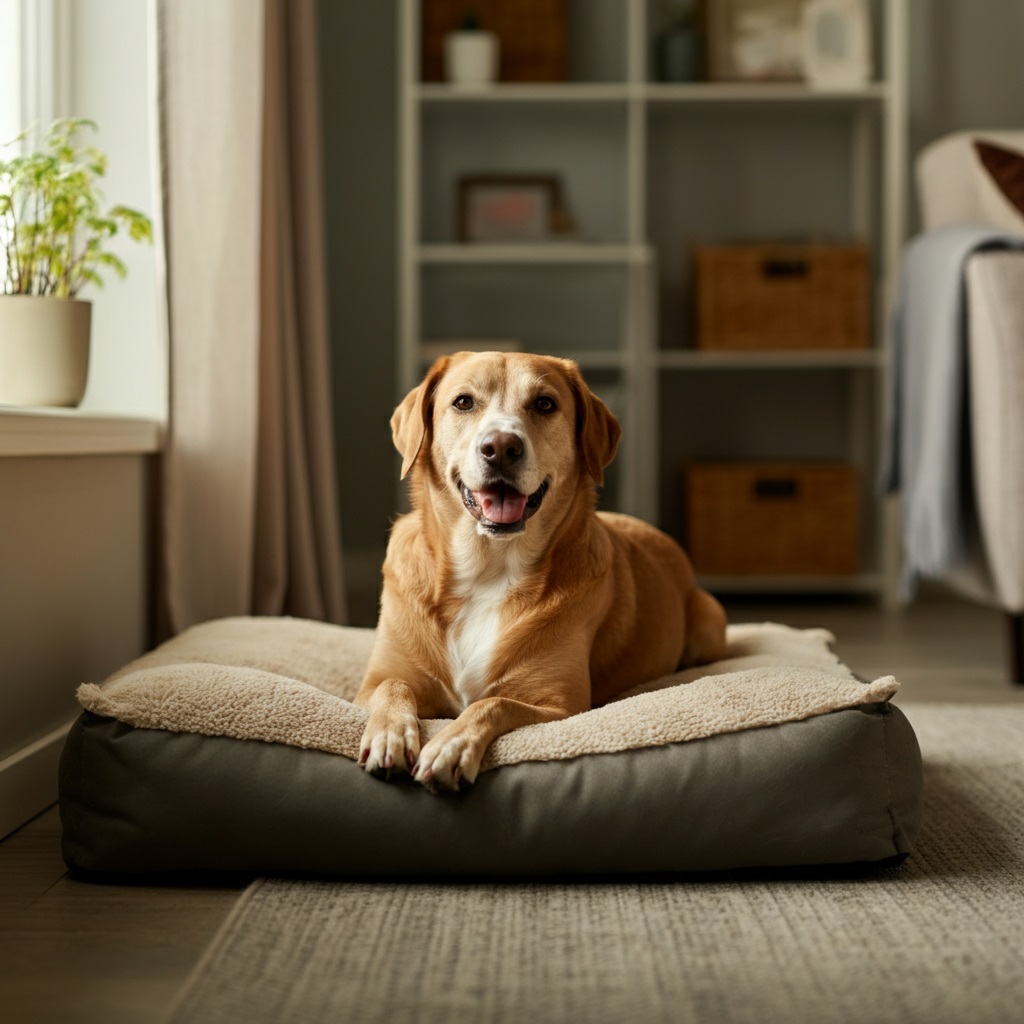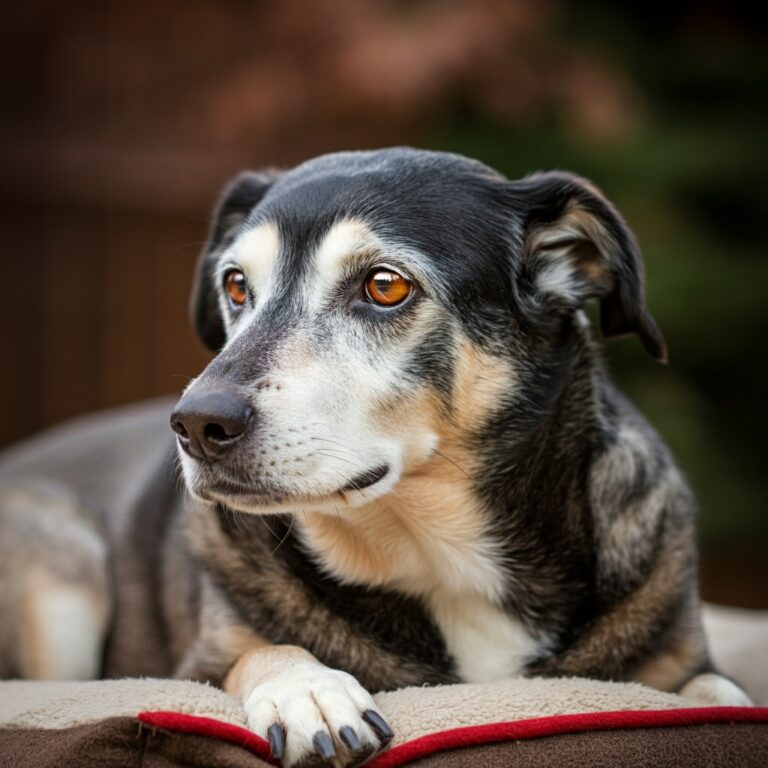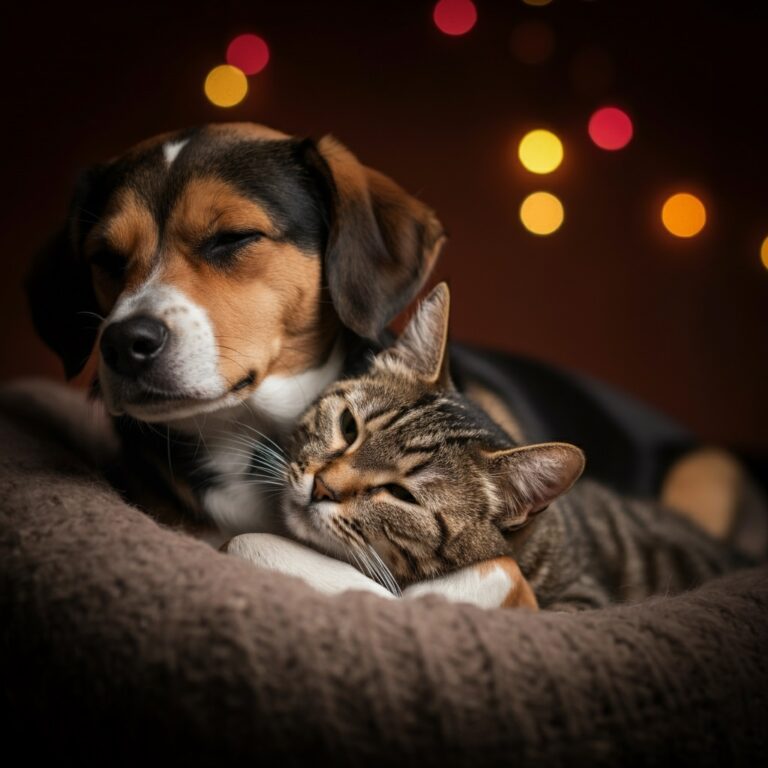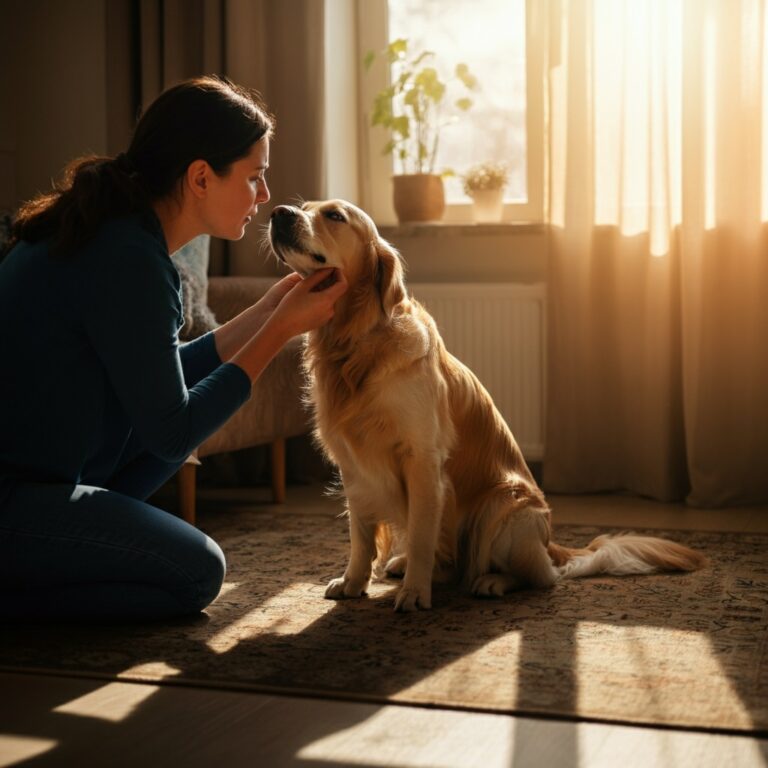
Fireworks light up the sky with brilliant colors, and thunderstorms bring dramatic displays of nature’s power. But for many dogs, these loud, unpredictable sounds can trigger intense fear and anxiety. If you’ve ever watched your furry friend shake, hide, or pace frantically during a storm or Fourth of July celebration, you know how heartbreaking it can be.
The good news is that you can help your dog feel safer and more comfortable during these stressful events. This guide will walk you through proven strategies to calm your anxious pup, from immediate comfort techniques to long-term training approaches that can reduce their fear over time.
Understanding Why Dogs Fear Loud Noises
Before diving into solutions, it’s helpful to understand why dogs react so strongly to fireworks and storms. Dogs have much more sensitive hearing than humans—they can hear frequencies up to 65,000 Hz compared to our 20,000 Hz limit. This means the booms and crashes that startle us are even more overwhelming for them.
Additionally, dogs can’t predict when these sounds will occur or understand that they’re not actually dangerous. From their perspective, these sudden, loud noises could signal a real threat. Some dogs are naturally more noise-sensitive due to genetics, while others may have developed this fear due to lack of early exposure or a traumatic experience.
Signs Your Dog is Stressed
Recognizing stress signals helps you respond quickly to comfort your dog. Common signs include:
- Trembling or shaking
- Panting heavily
- Drooling excessively
- Hiding in small spaces
- Pacing or restlessness
- Whining or barking
- Destructive behavior
- Loss of bladder or bowel control
- Trying to escape or run away
The severity of these symptoms can vary greatly between dogs. Some might show mild anxiety, while others experience full panic attacks.
Immediate Comfort Strategies
Create a Safe Space
Set up a quiet, comfortable area where your dog can retreat during storms or fireworks. This could be:
- A bathroom or closet in the center of your home
- Under a bed or table
- A crate covered with blankets
- Any small, enclosed space your dog naturally gravitates toward
Make this space extra cozy with their favorite blanket, toys, and perhaps an item of your clothing that smells like you. The goal is to create a den-like environment that feels secure and familiar.
Use Sound Masking
Reduce the impact of scary noises by creating competing sounds:
- Play calming music or white noise
- Turn on a fan for consistent background sound
- Use a sound machine with nature sounds
- Try specially designed music for dogs, which often features slower tempos and simplified melodies
The key is to start the sound masking before the storm or fireworks begin, so your dog doesn’t associate the calming sounds with the scary event.
Stay Calm Yourself
Dogs are incredibly perceptive and pick up on their owner’s emotional state. If you’re anxious about the approaching storm or worried about your dog’s reaction, they’ll sense that energy. Take deep breaths and maintain a calm, reassuring presence.
However, avoid over-comforting your dog, as this can actually reinforce their fearful behavior. Instead of excessive petting or baby talk, offer quiet companionship and gentle reassurance.
Apply Gentle Pressure
Many dogs find comfort in gentle, consistent pressure around their body. You can provide this through:
- Anxiety wraps or thundershirts: These snug-fitting garments apply constant, gentle pressure that can have a calming effect
- Gentle massage: Slow, circular motions on your dog’s chest, shoulders, or behind their ears
- Calm physical contact: Simply sitting near your dog or placing a hand on them can provide comfort
Long-Term Training Solutions
Desensitization Training
This process gradually exposes your dog to the sounds they fear at very low volumes, helping them become less reactive over time. Here’s how to do it:
- Find recordings of thunderstorms or fireworks online
- Start very quietly – the volume should be barely audible
- Play during positive activities like feeding or playing
- Gradually increase volume over weeks or months
- Reward calm behavior with treats and praise
- Never rush the process – moving too quickly can worsen the fear
This training works best when started during calm weather, well before storm season or major holidays.
Counter-Conditioning
This technique helps your dog form positive associations with the sounds they fear. Every time you play storm or firework sounds (starting very quietly), engage in activities your dog loves:
Continues after advertising
- Feed them their favorite treats
- Play their favorite game
- Give them a special toy
- Provide extra attention and affection
Over time, your dog may begin to associate these sounds with good things happening rather than danger.
Basic Obedience Training
A well-trained dog is often a more confident dog. Teaching basic commands like “sit,” “stay,” and “come” gives you tools to redirect your dog’s attention during stressful events. The mental stimulation of following commands can also help distract from scary noises.
Additional Calming Aids
Natural Supplements
Several natural options may help reduce anxiety:
- Melatonin: Can promote relaxation and sleep
- L-theanine: An amino acid that may reduce stress
- Chamomile: Has mild calming properties
- Valerian root: May help with anxiety
Always consult your veterinarian before giving your dog any supplements, as dosing varies by size and individual needs.
Calming Pheromones
Dog appeasing pheromones (DAP) mimic the calming scents mother dogs produce to comfort their puppies. These are available as:
- Plug-in diffusers for your home
- Sprays for bedding or carriers
- Collars that release pheromones continuously
While not every dog responds to pheromones, many owners report good results with minimal side effects.
Prescription Medications
For dogs with severe anxiety, your veterinarian might recommend anti-anxiety medications. These can include:
- Short-acting medications for specific events
- Long-term medications for dogs with chronic anxiety
- Combination therapies that address multiple aspects of anxiety
Medication should always be used under veterinary supervision and often works best when combined with behavioral training.
What NOT to Do
Avoid these common mistakes that can make noise phobia worse:
- Don’t punish fearful behavior: This will only increase your dog’s stress
- Don’t force exposure: Pushing a terrified dog toward the noise source can worsen their fear
- Don’t ignore severe symptoms: Extreme anxiety can be dangerous and may require professional help
- Don’t wait until the event: Start preparing and training well in advance
Creating a Storm Season Action Plan
Develop a consistent routine for managing your dog’s anxiety:
- Monitor weather forecasts and prepare in advance
- Set up the safe space before storms arrive
- Start sound masking early in the day
- Have calming aids ready (supplements, anxiety wraps, etc.)
- Plan indoor activities to keep your dog distracted
- Stay home if possible during severe weather or fireworks
When to Seek Professional Help
Consider consulting a professional if:
- Your dog’s anxiety is severe or getting worse
- They’re injuring themselves trying to escape
- Multiple strategies haven’t provided relief
- The fear is expanding to other sounds or situations
- You’re feeling overwhelmed managing their anxiety
A certified dog behaviorist or veterinary behaviorist can create a customized treatment plan for your specific situation.
Read More👉 What’s the Ideal Walking Time for Your Dog’s Breed?
Building Long-Term Confidence
Remember that helping your dog overcome noise phobia is often a gradual process. Success might mean your dog goes from hiding under the bed to simply staying alert during storms. Even small improvements represent progress.
Consistency is key. The more you practice these techniques, the more natural they’ll become for both you and your dog. Start working on desensitization and counter-conditioning during quiet periods, so you’re both prepared when the next storm rolls in.
Your patience and dedication to helping your dog feel safe will strengthen your bond and improve their quality of life. With time and the right approach, many dogs can learn to tolerate or even ignore the sounds that once terrified them.
Every dog is unique, so don’t get discouraged if one method doesn’t work immediately. Try different combinations of techniques until you find what works best for your furry friend. The goal isn’t to eliminate all fear overnight, but to help your dog feel secure and supported when facing their fears.



